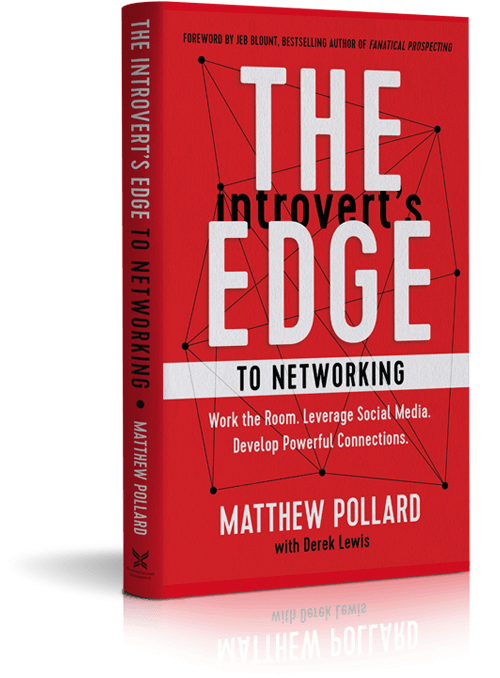Have you ever wondered why some introverts seem more outgoing than others, and some seem plagued with shyness or social anxiety? Or why some self-proclaimed introverts seem guarded while others strike you as blissful daydreamers?
If you’re an introvert yourself, you may have noticed that you don’t fit neatly into any one box either. That’s to be expected: Introversion is a blanket term, and just like any other group of people, not all introverts think and behave the same way. That’s because there are different types, that impact people differently.
Understanding these 4 types of introverts – social, thinking, anxious, and restrained – can help foster empathy, self-awareness, and personal growth. Even better, knowing yourself more deeply can help you identify and hone the introverted strengths that make the most impact on your personal and professional success.
What is an Introvert? Hint: It’s Not About Shyness
Simply put, an introvert is someone who recharges through solitude, and is comfortable focusing on their inner thoughts and ideas. According to Swiss psychiatrist Carl Jung, who first coined the terms “introvert” and “extrovert” to denote the two personality types, introverted people gain energy from being alone and reflecting on their thoughts and feelings. As you might expect, this is the opposite of extroversion; extroverts seek out other people for their energy needs.
The American Psychological Association defines introversion as “an orientation towards one’s inner thoughts and feelings, rather than towards the outside world of people and things…Introverts are relatively more withdrawn, retiring, reserved, quiet, and deliberate; they may tend to mute or guard expression, adopt more skeptical views or positions, and prefer to work independently.”
The APA further notes that the introvert personality exists on a spectrum, with “a continuum of attitudes and behaviors” – essentially, having extroverted traits mixed with introverted ones. Some people are more “typically introverted” than others. Some are much closer to one side than another, while some fall right in the middle of the scale. And we may change over time as well; personality is rarely completely fixed.
Exploring the Neuroscience
The neuroscience behind introversion reveals fascinating differences in brain activity and neurotransmitter levels compared to an extroverted personality.
One key difference researchers have observed lies in the prefrontal cortex. This area of the brain, responsible for decision-making, planning, abstract thinking, and behavior control, tends to be more active and have thicker gray matter in introverts.
Gray matter is composed of neuronal cell bodies and is crucial for processing information and cognitive function. An increased volume of gray matter could potentially mean more information-processing capacity.
One study found that introverts exhibited more blood flow in the frontal lobes and anterior thalamus. These brain regions are associated with remembering, planning, problem-solving, and decision-making, as well as internal thought processes and self-reflection. This might suggest why introverts are often introspective and enjoy spending time alone.
On a neurotransmitter level, dopamine and acetylcholine are often discussed. Dopamine is a neurotransmitter that is often associated with reward-seeking behaviors. Extroverts are thought to be more sensitive to dopamine rewards, which are usually derived from external, sociable activities.
Conversely, introverts are believed to be more sensitive to acetylcholine, a neurotransmitter associated with pleasure derived from internal, reflective activities. This may partly explain why introverts prefer solitary activities and find large social gatherings to be draining.
There’s also the aspect of arousal and stimulation. The Ascending Reticular Activating System (ARAS) plays a crucial role in controlling arousal levels and responsiveness to stimulation in our environment.
Extroverts, who require more stimulation to reach an optimal state of alertness, are believed to have a less responsive ARAS. Introverts, on the other hand, have a highly responsive ARAS, making them more sensitive to sensory input and therefore more likely to seek out quieter, less stimulating environments.
It’s also worth noting the role of the amygdala, a brain region crucial for processing emotions. Studies have suggested that introverts might respond differently to external stimuli, with their amygdalae showing more activity in response to stimuli that extroverts find pleasurable.
This heightened sensitivity might contribute to introverts’ preference for lower-stimulation environments, such a spending time with just or two people and keeping it low-key.
While these findings are intriguing, they don’t explain every aspect of introversion and extroversion. Personality is influenced by a multitude of factors, both biological and environmental. As research continues, we will likely develop a more complete understanding of the complex interplay between our brains and our personalities.
Popular Misconceptions
Unfortunately, many misconceptions about introverts still persist, leading to misunderstandings and stereotypes. Some of the most common are listed below:
We are antisocial or shy: While we do require time alone to recharge, it does not always mean we’re awkward or shy around people. Certain types of introverts can enjoy socializing and often have strong social skills; we just often prefer one-on-one or small group interactions and need time to recharge afterward.
We don’t make good leaders or public speakers: The truth is, many of us are effective leaders and great public speakers! We tend to be good listeners; we can give thoughtful, well-prepared speeches or presentations; and teams appreciate our empathy and trust in their abilities.
We’re always quiet: While we can be more reserved in different settings, it doesn’t mean we’re always quiet. We may speak less in large groups, but in small groups and quiet settings, or when discussing topics we’re passionate about, we can be quite talkative.
We’re not adventurous or don’t enjoy fun: Like any other group of people, we have a wide range of interests and hobbies. Some may enjoy quiet hobbies like reading or writing, but others might love travel, outdoor activities, or trying new things. The key is that we might prefer to enjoy these activities in our own way, or with just one or two people.
Understanding the 4 Types of Introverts
The concept of four types was proposed by Wellesley psychologists Jennifer Grimes, Jonathan Cheek, and Julie Norem. In a 2011 study, they challenged the idea that introversion has a single definition. As Cheek now argues, introversion isn’t a one-dimensional personality but a complex set of characteristics that can be broken down into distinct subtypes.
The researchers conducted a series of empirical studies using factor analysis, a statistical method used to categorize variables into broader factors based on their correlations. Initially, they identified ten potential aspects of introversion. When these were further analyzed, the researchers were able to narrow these down to four dimensions that were distinct yet interrelated.
The result was the STAR model, an acronym for the four identified types: Social, Thinking, Anxious, and Restrained. This more nuanced understanding was a significant step forward, presenting the idea that people could be introverted in different ways; for example, a person isn’t necessarily shy just because they’re an introvert (which most introverts probably already know!).
The STAR model has since been influential in shaping contemporary understanding and discussion about introverted personality types. Let’s take a look at these four types in detail.
The Social Introvert
People who fall into this category are a unique type that finds pleasure in both alone time or streamlined social interactions with close friends or family. They don’t feel anxious about socializing, and they don’t often feel awkward or shy around people. But generally, social introverts prefer quiet settings over crowds. While they may appear reserved or aloof initially, they can be passionate and excited about the topics and people they care about.
After a great time socializing, they inevitably need to recharge by retreating to the comfort of their own space. Engaging in calming activities like reading or journaling, they reflect on their experiences, process their emotions, and regain their energy for future interactions.
Social introversion, however, isn’t without its challenges. Striking a balance between their need for socializing and alone time can be a delicate act, and they may find themselves overwhelmed in large groups or noisy environments. Yet, by learning to set boundaries and prioritize self-care, they can manage these challenges effectively.
Tips for thriving as a social introvert include planning ahead for social gatherings and even a quick coffee, as well as being mindful of energy levels. Take breaks as needed, and schedule down time for reflection. Surround yourself with understanding, like-minded individuals, and engage in activities you enjoy.
The Thinking Introvert
These are the philosophers and dreamers of the world, happy to spend time in their thoughts. They tend to have creative imaginations, and are characterized by their insatiable curiosity and love for learning.
They immerse themselves in creative pursuits and intellectual challenges, often showcasing their natural inclination for introspection, vivid imagination, and strong empathy. Being analytical and reflective, they treasure time alone to turn to their own minds to explore their thoughts and feelings, leading to impressive insights and creative ideas.
They also possess significant intellectual strengths. They’re distinguished by their prowess in critical thinking, creativity, and empathy. Their keen ability to analyze information, recognize patterns, and problem-solve, combined with their empathic connections, make them excellent listeners and compassionate friends. These strengths empower them to effect positive change in personal and global contexts.
However, thinking introversion may also present challenges in daily life. You may overthink situations, leading to anxiety or stress. Engaging in small talk can feel daunting, as you prefer deeper discussions.
Additionally, you may feel misunderstood or unappreciated for your unique perspectives and abilities. Despite these struggles, with recognition and appropriate support, thinking introverts can surmount these obstacles and continue to thrive.
Managing your intellectual energy is key. Embrace your deep thinking, but also recognize when it leads to overthinking and address it accordingly. Take regular breaks and engage in mindfulness or relaxation practices to alleviate stress. Seek environments that value your depth of thought and allow you the time to think before you speak. Cultivate relationships with those who appreciate your unique insights and perspectives, in order to create a supportive network where you feel understood.
Finally, remember that small talk often paves the way for deeper conversations; be willing to engage and see where it leads.
The Anxious Introvert
Unlike the social introvert, who does enjoy being with others, an anxious introvert is often shy or quiet, and prefers to be alone due to anxiety in social settings. They may also embody a heightened awareness of their surroundings and social cues. This kind of introvert tends to feel unsettled and self-conscious in group environments, a state often referred to as anxious introversion.
The anxiety presents in a variety of ways, such as nervousness, avoidance behaviors, and amplified sensitivity. Physical signs might include heart palpitations, sweating, and difficulty breathing, while emotional symptoms may include uneasiness or apprehension in social contexts, often leading to avoidance of such interactions.
To cope with their anxiety, anxious introverts often seek solitude and indulge in calming activities like meditation, journaling, or immersing themselves in a favorite hobby. This is a wise choice to recharge and practice mindfulness, as it allows for better control over your emotions, a way to navigate anxiety more effectively, and feel more at ease in your daily life.
Despite these coping mechanisms, anxious introverts may encounter challenges, including managing anxiety, initiating conversations, or feeling overwhelmed in large groups, to the extent that it dominates much of your mind and energy. Expressing thoughts and feelings can also be difficult. However, acknowledging these challenges and seeking support when necessary allows you to work towards overcoming these obstacles and building meaningful relationships.
It may seem like this group gets the short end of the stick, there is much to be encouraged by if you’re in this category. You likely have a high degree of empathy, as you can easily relate to the feelings of stress and discomfort experienced by others. This empathy can be a powerful tool for forming deep connections and fostering understanding in your relationships.
You also have keen attention to detail, noticing subtleties that almost everyone else misses. This means you have a deep awareness of yourself and the world around you, which can be key ingredients to cultivating resilience and growth.
For an anxious introvert, self-care strategies include practicing self-compassion, engaging in calming activities, setting boundaries, and prioritizing self-care. Being surrounded by understanding and supportive individuals who appreciate your unique perspective and empathize with your anxiety can help. Focus on self-care and seek the right support, in order to construct a robust foundation for personal growth and well-being.
The Restrained Introvert
Restrained introversion is characterized by caution, thoughtfulness, and a grounded nature. Because they don’t show their cards upfront, this group may seem detached or aloof. However, their wisdom and reliability become apparent once they feel comfortable.
Recognized as reliable, responsible, and wise, restrained introverts (also known as inhibited introverts) display a reflective and cautious approach to life, preferring to think before acting. They are more likely to observe and listen rather than indulge in impulsive behaviors.
Internally, they host a world of introspection and thoughtfulness. They relish time alone, allowing them to reflect on experiences, explore thoughts and feelings, and gain a deeper understanding of themselves and the world. Their propensity for contemplation often leads to insightful observations and well-considered decisions, underpinning their reputation for wisdom.
It isn’t accurate to say that a restrained introvert simply doesn’t show emotion, but it is true that social settings may pose challenges. Opening up to others, being misunderstood, or having their quiet demeanor misconstrued as disinterest or aloofness can be difficult.
Further challenges include expressing thoughts and feelings, connecting with others, participating in group activities, and speaking up in social situations. These hurdles can evoke feelings of isolation or frustration. Recognition of these issues is key to seeking appropriate support and overcoming obstacles.
To foster self-understanding and acceptance, practice patience and self-awareness, embrace your unique strengths, and seek like-minded individuals who appreciate your introspective nature. Focus on building meaningful connections and engaging in conversations that align with your interests and values.
Staying true to yourself and prioritizing well-being cultivates self-acceptance and personal growth. In addition, understanding social psychology principles can enhance your ability to navigate social interactions.
Summaries, Strengths, Careers, and Interests of Each Type
How can your type shape your life and career, as well as influence your hobbies? Each type, while unique, tends to share a set of strengths and interests that guide your life path. Of course, these are not fixed rules – it’s perfectly normal to see parts of yourself in multiple categories.
Whether you fit most into one category or see yourself in all of them, understanding your specific, innate strengths can be helpful in navigating your personal and professional life.
Social Introversion:
- Skilled at building deep and meaningful relationships
- Ability to set and respect personal boundaries
- Great hosts, able to create comfortable environments for small gatherings
- Preference for quality over quantity in social situations; tend to enjoy intimate gatherings
- Possible career paths: Counseling, writing, or graphic design, where you can work largely independently but still make meaningful contributions
- Possible personal interests: Reading, arts and crafts, nature walks, small book clubs, or intimate music gigs
Thinking Introversion:
- Possess a rich, introspective inner world
- Strong creative and imaginative capabilities
- Excellent problem-solving skills due to deep reflection
- Empathetic and good listeners, making supportive friends
- Possible career paths: Philosophy, scientific research, or psychology, where deep thinking is required
- Possible personal interests: Reading, writing, philosophy, intellectual games like chess, art, or music
Anxious Introversion:
- Off-the-charts attention to detail
- High levels of empathy, able to understand and support others dealing with anxiety or stress
- Ability to notice subtle details others would overlook
- Self-aware and often highly introspective
- Possible career paths: Editing, programming, research, or roles where meticulous detail orientation is required
- Possible personal interests: Yoga, meditation, painting, or other relaxing solo activities
Restrained Introversion:
- Excel in areas that require careful thought and patience
- Effective decision-makers due to thoughtful consideration of various perspectives
- Dependable and reliable due to a steady approach to life
- Reflective nature, able to see the big picture
- Possible career paths: Strategic planning, engineering, accounting, or other roles that require careful analysis and decision-making
- Possible personal interests: Puzzles, hiking, reading, chess, or other activities that allow for quiet contemplation and strategic thinking
Still Not Sure What Type of Introvert You Are?
If none of these explanations of the four main types feels 100% true to who you are, that’s ok. We introverts usually don’t fit neatly into any one box. The STAR model provides a valuable framework to understand the different shades of introversion, but the categories are not mutually exclusive.
We often exhibit characteristics from multiple categories, and the degree to which these traits are manifested may vary depending on a variety of factors such as context, mood, and personal growth.
For instance, a thinking introvert might also show traits of an anxious introvert, wrestling with anxiety in social situations while simultaneously indulging in deep introspection and creativity.
Similarly, a social introvert who prefers smaller gatherings could also be a restrained introvert, demonstrating a careful and thoughtful approach to life. It’s also possible that over time, the intensity of these traits may change.
The STAR model is not a diagnostic tool but a descriptive one, intended to foster self-understanding and promote empathy and acceptance in social settings.
These categories aren’t limitations, but guideposts to help you understand your natural inclinations and navigate the world in a manner that feels most authentic.
Cultural Considerations
It’s also worth considering cultural and environmental factors when interpreting the types of introversion. What might be perceived as “anxious” or “restrained” in one cultural or social context might be considered normal or even desirable in another.
In many Western societies, there’s often an emphasis on extroversion, where traits such as assertiveness, expressiveness, and social dominance are frequently valued. As a result, people displaying characteristics of being reserved, cautious, or sensitive to their surroundings might be misinterpreted as being overly shy, aloof, or lacking in social skills.
In contrast, many Eastern societies tend to value harmony, modesty, and group cohesion. In these cultures, being quiet, thoughtful, and attentive to the needs and feelings of others are seen as positive attributes. So, someone with the traits of an anxious or restrained introvert might be considered considerate, thoughtful, and respectful in these contexts.
This can also apply to specific environments within a culture, such as a company or school. For example, in a start-up company that values quick decision-making and bold action, a thoughtful and cautious approach might be undervalued. But in a research institution where careful analysis and deep thinking are required, these same characteristics might be highly appreciated.
Next Steps
Just by reading this article about the different types of introverts, you’re already on the path towards self-awareness and understanding. To continue on this journey, consider the following steps:
Reflect on your own traits: Now that you have a better understanding of the four types of introverts, take some time to think about your own behaviors, preferences, and feelings in various situations. Do you see yourself more in one category or across several ones?
Leverage your strengths: Once you’ve identified your unique strengths, think about how you can use them to your advantage in your personal life, career, or hobbies.
Experiment with different situations: Try putting yourself in different social and professional scenarios to see how you respond and where you feel most comfortable and authentic. This will not only help you understand yourself better, but also help you identify environments in which you thrive.
Connect with like-minded individuals: Find others who understand and appreciate your nature. This can provide you with a supportive network where you feel accepted and valued.
No matter what, remember that ultimately, this journey is not about boxing yourself into a category. It’s about gaining insights into your unique personality to navigate your life in a way that feels authentic and fulfilling.





































